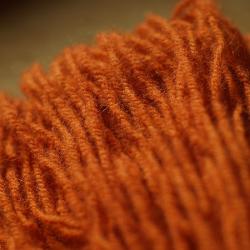Source Institutions
Source Institutions
Add to list Go to activity
Activity link broken? See if it's at the internet archive

In this activity (p.23 of PDF), learners dye wool with fungi. Learners discover that natural chemicals in fungi can dye wool different colors. Note: Natural dyeing normally requires a color fixative such as alum. This is not necessary if you use an aluminum, tin, or copper pot as the metal in the pot will take part in the dyeing reaction. However, if you use a non-stick saucepan you should add a few copper coins to the mix. Safety note: Always wash your hands after touching fungi! Adult supervision recommended.
- Under 5 minutes
- 2 to 4 hours
- $10 - $20 per group of students
- Ages 11 - 14
- Activity
- English
Quick Guide
Materials List (per group of students)
- Approximately 100g of clean mushrooms, coarsely chopped (fresh or dried)
- Approximately 100g of light-colored nature wool
- A large aluminum, tin or copper pot (see note)
- Approximately 3 liters of water (2 liters if using dried mushrooms)
- A mixing spoon
- A straining spoon or sieve
- A means of heating water
Subjects
-
Life Sciences
-
Diversity of Life
- Protists and Fungi
-
Ecology
- Biodiversity
-
Diversity of Life
Informal Categories
- Arts and Crafts
- Nature and Environment
Audience
To use this activity, learners need to:
- see
- see color
- touch
Learning styles supported:
- Links STEM to other topics of interest such as arts and humanities
- Involves hands-on or lab activities
Other
This resource is part of:
Access Rights:
- Free access
By:
- Assinder, Sue ; Rutter, Gordon
Rights:
- All rights reserved, British Mycological Society and the Biotechnology and Biological Sciences Research Council, 2002
Funding Sources:
- British Mycological Society
- Biotechnology and Biological Sciences Research Council
